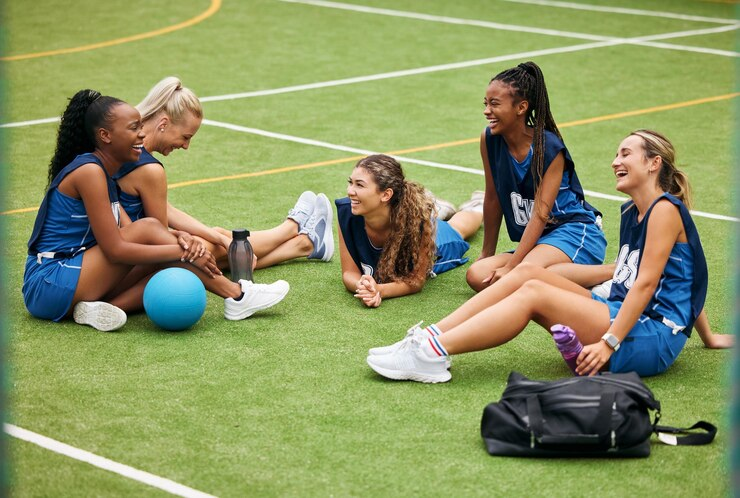Sports
The Intersection of Race and Gender in College Sports: Breaking Down Barriers and Promoting Diversity

Sports have always served as a unifying force, bringing together individuals from various backgrounds and cultures for friendly competition. The intersection of race and gender, particularly in college sports, can present significant barriers for athletes, even in an environment that appears to be comprehensive.
To promote diversity both on and off the field, there has been an increasing effort in recent years to remove these barriers.
In this article, we’ll go into more detail about this important topic and look at some tactics for creating a more welcoming and fair environment for all student-athletes.
The Challenges Faced by Diverse Athletes in College Sports: A Historical Brief
College sports have predominantly been dominated by white male athletes. Numerous factors, such as systemic racism and sexism, can be blamed for this.
Women and people of a certain color have historically been excluded from athletic participation at many universities due to discriminatory policies.
College sports were exclusively played by white men in the early 1900s, and many college sports programs did not permit the participation of African American athletes until the 1950s and 1960s. Similar restrictions applied to women’s participation in many college sports until Title IX was passed in 1972.
In addition, many students, particularly those from underprivileged backgrounds, may find the cost of participating in college sports to be prohibitively high.
It can be very challenging for low-income students because many universities expect their athletes to cover their own costs for uniforms and travel.
What is Intersectionality, and Why is it Important to Understand it?
Any discussion of racial and gender issues in college sports must include the idea of intersectionality. Multiple social groups that people may be a part of intersect to influence their experiences and identities are known as intersectionality.
Women comprise 44.8 percent of NCAA student-athletes as of the 2019–2020 academic year. Still, only 29.9 percent of head coaches and 41.5 percent of assistant coaches are female, according to the NCAA Demographics Database.
For instance, a black woman participating in college sports may encounter difficulties different from those faced by a white man or a white woman.
Thus, for a more inclusive and equitable environment for all student-athletes, an understanding of intersectionality is essential.
Breaking Down Barriers: Promoting Diversity and Inclusion in College Sports
The advancement of diversity in college sports can be accomplished through various tactics. Some of them are as follows:
1. Finding and Keeping Diverse Coaches and Staff
Finding and keeping diverse coaches and staff members is one of the best ways to promote diversity in college sports. This can encourage diversity among student-athletes of all backgrounds and serve as mentors and role models for athletes who might not otherwise see themselves in traditional leadership roles.
2. Giving Student-Athletes Resources and Support
One of the most important tactics for fostering diversity in college sports is to give student-athletes from underrepresented groups resources and support.
This could entail academic coaching, providing collegiate wear, accessibility to mental health resources, and cultural programming that honors diversity and promotes inclusion.
3. Addressing Implicit Bias
When we talk about unspoken partiality, we mean the unconsciously held beliefs and stereotypes that can affect how we perceive the world and behave.
In order to create a more welcoming environment for all student-athletes, addressing implicit bias is crucial because it can assist in tearing down barriers and fostering understanding among various racial and gender identities.
4. Coaches who are supportive
Athletes should be given the resources they need to overcome challenges as well as support in speaking out against discrimination.
Coaches and athletic administrators should receive training to recognize and address sexism, racism, and other forms of discrimination.
Additionally, they should take equal responsibility for providing similar custom college apparel to every athlete to promote unity and a sense of belonging.
5. Celebrating Diversity
It’s crucial to acknowledge diversity in any college sport. This would possibly entail highlighting athletes’ accomplishments from underrepresented agencies, showcasing numerous cultural traditions, and presenting student-athletes with the possibility to express their critiques and studies to others.
As noticed, black student-athlete participation rates in NCAA Division I men’s basketball (56.6%) and football (45.2%) teams are currently higher than their participation rates in the undergraduate student body as a whole (14.6%).
The Benefits of Diversity in College Sports
There are many advantages to encouraging diversity in college sports. Such as:
1. Enhanced Performance
Diverse teams perform higher than homogeneous teams and are regularly extra progressive. By promoting range in collegiate athletics, we can assist in the formation of stronger and extra productive teams.
2. Social Justice
Diversity and equality applications in college sports can also assist with social justice issues. By doing away with boundaries and fostering surroundings that are extra welcoming, we can work to promote equality and fairness for all student-athletes.
3. Personal Growth
At a more advanced level, diverse groups can be an effective experience for student-athletes that promotes personal development.
By exposing them to numerous perspectives and experiences, we can help young athletes pursue extra empathy and open thinking levels.
4. Providing Equal Voice
Making policies and programs that support diversity and inclusivity, as well as working to eradicate systemic racism and sexism, are necessary to achieve this.
It also entails giving underrepresented athletes a voice and a platform to express their perspectives and experiences.
5. Good Role Models
At last, encouraging diversity in college sports can aid in developing positive role models for young people. We can encourage the following generation of student-athletes and advance a more inclusive and equitable future by highlighting athletes from various backgrounds and identities.
End Note
College sports activities have long been a platform to show athletic success and physical competence. But it is not continually smooth to find diversity in the field. A severe difficulty that requires our interest is the interaction of race and gender in university sports.
This important problem has an impact on athletes of all kinds. Working together to break down barriers can create a more equitable and inclusive college sports environment for all athletes.
Related CTN News:
IPL Points Table 2023 – IPL Standings & Team Rankings After KKR vs RR Match
WWE And UFC To Merge To Create $21.4bn Sports Entertainment Giant
How To Watch IPL 2023 Live Streaming [On Android, iPhone, Laptop & Smart TV]





























